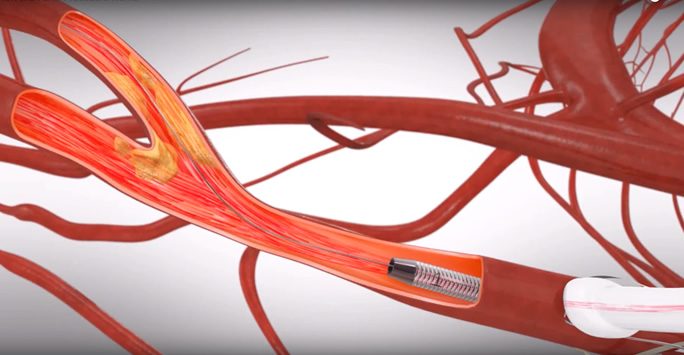RENAL & CAROTID ANGIOPLASTY
RENAL ANGIOPLASTY
Renal artery stenosis is the narrowing of the arteries that supply blood to the kidneys. It can lead to uncontrolled hypertension, which should be treated initially with medications. If you have renal artery stenosis and blood pressure remains uncontrolled or complications such as pulmonary edema or worsening kidney function develop, angioplasty with stenting should be performed. Renal angioplasty restores blood flow through the renal artery and improves blood flow to your kidney. Renal angioplasty can be done by a small puncture done from your groin or sometimes from left arm. Initially the blocked artery is opened by inflating a tiny balloon in it; it is followed by permanent placement of a stent. This procedure is very similar to coronary angioplasty.
CAROTID ANGIOPLASTY
Cholesterol deposition (plaque) can narrow or block your carotid arteries which supply blood to the brain. When one or both of your carotid arteries are narrowed, it can make it hard for blood to flow to the brain. Sometimes blood clot develops in that narrowed part and may dislodge to the brain. This blood clot in the brain can block the artery in your brain and that results in stroke and paralysis. Carotid artery angioplasty and stenting may improve blood flow to your brain and lower the risk of having a stroke.
Your doctor may suggest for carotid artery stenting if:
- You have had a mild stroke or transient ischemic attacks (TIAs) in the past 6 months and your carotid artery is narrowed by 70% or more.
- You have a low risk for complications from the procedure.
- You have a high risk of complications from carotid artery surgery.
Carotid angioplasty is performed by a small puncture in your groin. The procedure is similar to coronary angioplasty. Additionally, an umbrella-shaped filter (embolic protection device) is placed beyond the block during the procedure; it helps to catch any debris that may break off from the narrowed area of artery during ballooning and stenting.

